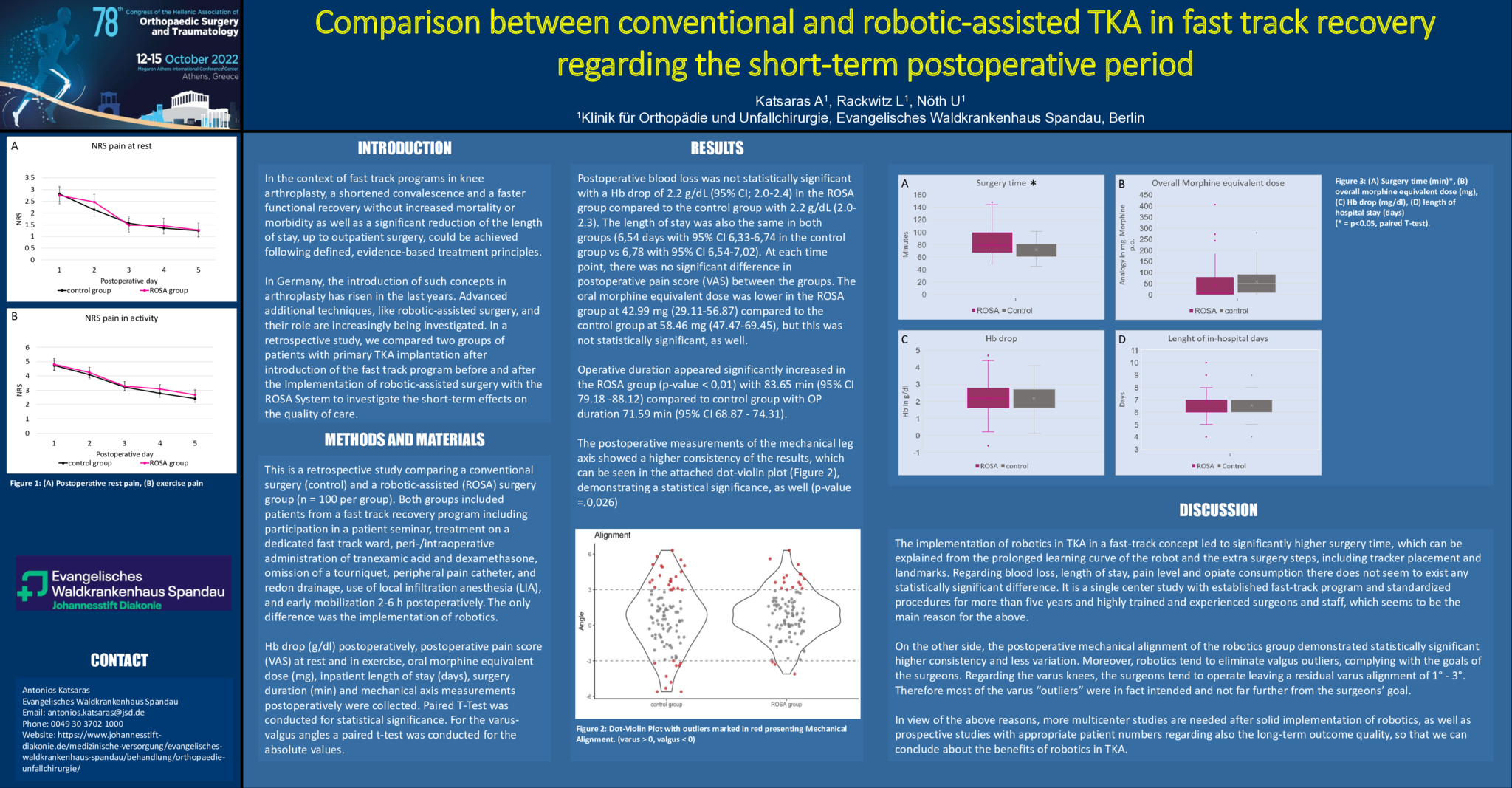Comparison between conventional and robotic-assisted TKA in fast-track recovery regarding the short-term postoperative period
Introduction
Worldwide, the introduction of fast-track recovery concepts in arthroplasty has risen in the last years. Advanced techniques, like robotic-assisted surgery are increasingly being implemented. Potential contribution of robotics is being investigated by newer studies.
Aim
In this single-center retrospective study, we compared two groups of primary TKA patients (n = 100 per group) with and without use of robotic-assisted surgery to investigate the short-term effects on the quality of care.
Material & Methods
Postoperative Hb drop (g/dl), pain score (VAS) at rest and on exertion, oral morphine equivalent dose, inpatient length of stay, surgery time data were collected. Mechanical axis measurements postoperatively were analyzed in an outliers’ diagram.
Results
Postoperative blood loss was identical in both groups with 2.2 g/dL (95% CI; 2.0-2.4) in the robotics group compared to 2.2 g/dL (2.0-2.3) of the control group, as well as length of stay (6,54 days with 95% CI 6,33-6,74 control vs 6,78 with 95% CI 6,54-7,02). There was no difference in postoperative pain score (VAS) between the groups at any point. Oral morphine equivalent dose was lower in robotics at 42.99 mg (29.11-56.87) vs 58.46 mg (47.47-69.45) in control group, but also not statistically significant. Operative duration in robotics group was longer, 83.65 min (95% CI 79.18 -88.12) compared to 71.59 min (95% CI 68.87-74.31). The postoperative measurements of the mechanical leg axis showed a significantly higher consistency of the results with less outliers in the robotics group.
Conclusions
Prolonged surgery time was found, which can be attributed to the additional steps of the robotic procedure. Robotics could reproduce more consistent results regarding postoperative alignment. Larger prospective studies investigating more parameters and long-term results need to be conducted in order to reach solid conclusions about the benefits of robotics in TKA.
- 23 προβολές






